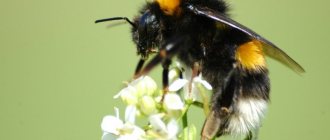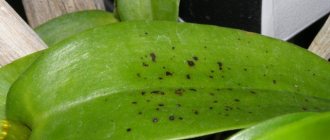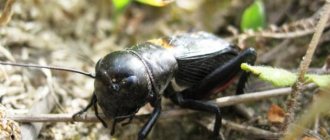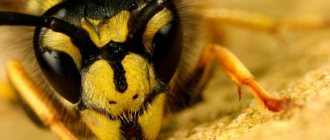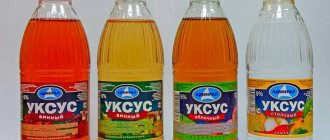Growing eggplants in central Russia is quite difficult. This vegetable crop is very heat-loving and is planted through seedlings. Eggplants cannot tolerate even short exposure to low temperatures. But despite all the difficulties that arise when growing this vegetable, gardeners manage to get a good harvest. The most important thing is to protect eggplants from the pest in time. These plants can be affected by insect pests such as whiteflies, spider mites, eggplant aphids and others.
Aphids are dangerous insects. It settles on the leaves and stems of the plant, sucks out the cell sap from it, thereby causing irreparable harm to both seedlings and adult plants. If measures are not taken, the crop may be completely destroyed, as aphid colonies grow very quickly. It is most effective to combat this pest at an early stage, before their numbers have increased significantly.
Plants in the greenhouse are most often affected. Since it creates optimal conditions for the life of this insect, namely high humidity and temperature. When the first signs appear, you need to start fighting aphids as quickly as possible in order to save the crop.
Why are aphids dangerous?
The mentioned pest is the most dangerous for nightshades and eggplants as well.
She spends her life on the leaves, stems and flowers of the plant. The diet of aphids includes plant sap. Despite its small size, the danger from it for young and adult plants is obvious. In particular, aphids lead to:
- weakening of the plant due to the rapid sucking of juice;
- leaf deformations;
- drying out of young growths;
- slower growth;
- development of sooty fungus due to contamination of the leaf surface;
- development of other infectious diseases;
- destruction of the planting.
What harm does it cause to seedlings and adult plants?
The insect can cause irreparable harm to eggplants:
- It drinks all the juices from the plant, depriving it of nutrients supplied to the roots. This also inhibits the growth of eggplant seedlings or leads to their drying out.
- A large number of aphids contributes to the proliferation of black mold, which slows down the metabolism inside the plant.
- Sometimes aphids infect a bush with diseases that will eventually destroy it.
Timely detection of the pest and proper treatment of seedlings and adult plants can save the eggplant harvest.
Below we will tell you in detail what to do if seedlings or an adult plant are attacked by this harmful insect, how to fight it, and how to spray the crops at home, in the garden, or in the greenhouse.
Signs of defeat
This insect is very dangerous. It settles on the leaves and stems of the plant and drinks all the juices from it. The pest loves humidity and warmth. Therefore, aphids feel great in the greenhouse and reproduce faster.
There are signs that indicate the presence of aphids on eggplants:
- white coating on the plant;
- ants appeared nearby;
- When examined, clusters of insects are found on the leaves, stems and flowers of the crop;
- sugary secretions are visible on the petioles of leaves;
- the leaves curl, turn yellow, and have brown spots on them;
- flowers and ovaries begin to fall off.
Prevention
- Before adding new plants to your garden, be sure to inspect them for aphids. If detected, immediately begin the fight.
- Proper feeding of eggplants plays an important role in preventing aphids. So the pest is more interested in overfed bushes.
- Also, for preventive purposes, some umbrella plants are planted in the beds: parsley, fennel. This will attract hoverflies to the garden, which feed on aphids. And feeding birds will attract those birds that also eat insects.
- Thyme and legumes protect against black aphids, and lavender repels green aphids.
Diseases and pests affect eggplants not only in open ground, but also in greenhouses. Read about how to protect your crops from spider mites, Colorado potato beetles and various leaf diseases.
Aphids are a particularly dangerous pest of eggplants. It can destroy all seedlings if treatment is not started in time. It is important to completely destroy the parasite, otherwise it may hide and appear during subsequent plantings. To ensure a quality fight, choose the most suitable means.
Folk methods of struggle
1. A solution prepared from laundry or tar soap. To make the solution, take a tablespoon of finely chopped soap and dissolve it in one liter of water. Then the solution is infused for several hours until the soap is completely dissolved. Treat all plants, and most carefully the underside of the leaf.
2. Table vinegar. Its pungent smell repels these insects. To make a solution, dilute 200 ml of vinegar in 10 liters of water. Spray on plants for three weeks, every three days.
Also, due to the pungent odor, you can use ammonia. 10 ml of ammonia are diluted in one bucket of water.
6. Tobacco. Pour two hundred grams of leaves into five liters of water and leave for 24 hours.
7. A decoction of tomato tops, tansy, and wormwood. The tops are filled with water and boiled for about an hour. Then the resulting decoction is diluted with water before processing. One glass of decoction is diluted with 800 ml of water.
8. Infusion of celandine. The celandine is finely chopped, water and soap shavings are added. Leave for 2-3 hours, and then treat the plants.
Traditional methods for fighting aphids should be used several times, alternating them with each other, so that the aphids do not get used to the means.
Professional preparations
Professional preparations against aphids
To destroy aphids on eggplants, you can use biological products that do not contain dangerous components. In terms of effectiveness, they occupy a position between folk remedies and insecticides. The biological product is effective for a week, and the effect lasts for the same amount of time. It is advisable to process the crop every 2 weeks. Effective products – Fitoverm, Tanrek, Strela.
Insecticidal preparations can be used directly when planting seedlings. The plant is sprayed with the solution only once. Any poison can be used for gardening and vegetable crops. Effective products - Actellik, Aktara, Karbofos, Iskra. The use of chemicals is dangerous for other harmless and even beneficial insects.
Traditional methods
Folk methods of struggle
You can fight small insects in open ground using the same means as in a greenhouse. You will have to make solutions, decoctions, and spray eggplants several times a week. You can also remove aphids using physical methods - knock them off with a stream of water under pressure. Or remove infected leaves.
- Soap solution for aphids. Laundry soap, tar, green, is used. The latter is a natural insecticide, so it acts faster. If the question arises of how to fight small parasites in a greenhouse, you can prepare a solution from green soap. Repeat treatment after a week. Laundry tar soap prevents the movement of insects and promotes the healing of leaves. Soap is part of any folk remedy - it holds the active components on the treated surface.
- Ash. Dilute wood ash in cold water and add soap. Spray the eggplants, paying special attention to the underside of the leaves. Repeated treatment is carried out a week later. Ash gives the juice a bitter taste, which repels pests and also irritates the skin.
- Alkaline environment. Mix baking soda and kitchen salt in equal proportions, add water and a little laundry soap. The solution is sprayed on the plants every 3 days until the insects disappear completely. To increase efficiency, add spices to the solution - cinnamon, pepper, mustard.
- Tobacco. You can save eggplants with tobacco powder. Spray the plant with a soap solution and sprinkle tobacco on top. Or pour cold water over the tobacco, leave it to steep for at least a day, and add soap. The product is sprayed twice a week.
- Decoctions. The poisonous solution is obtained from wormwood and tansy. Fill the raw material with water and leave to infuse for 3 days. Before use, strain and add soap. A decoction of garlic and onion peels has a deterrent effect. The preparation process is similar, only the product is infused for a day.
- Vinegar for aphids. Table vinegar repels aphids with its pungent odor. For 10 liters of water, 200 ml of product is consumed. Treat the plant every 3 days for 3 weeks. Instead of vinegar, you can use ammonia. 10 ml of ammonia per bucket of water. Treatment frequency: 1 time per week.
Also used: ammonia, celandine, Coca-Cola, vodka, tar, boric acid, green soap. How to treat eggplants against aphids is an individual decision. It is allowed to combine several funds.
Description of the pest
The most common aphid found on eggplants is black. But other varieties of green, yellow, even red may be present. About 1 thousand species of aphids live in our area, all of them feed on plant juices, slow down growth, and prevent the formation of fruits. Control methods for all types of parasites are identical.
Aphids on eggplants are growing rapidly. During the entire warm season, about 20 generations are replaced. From early spring to mid-summer, wingless females are born. They practically do not move and spend their entire lives on one plant. In mid-summer, winged offspring of males and fertile females appear. They mate in the air, migrate to trees and weeds, where they lay eggs that remain over the winter.
On a note!
Aphid parasitism begins in early spring. Initially, the insect feeds on the juices of the plant where it resided as an egg, and gradually moves to other crops. Eggplant seedlings can become infected with parasites. And there is not much difference where the plant grows - in the open ground or in a greenhouse.
A quick way to get rid of aphids on eggplant seedlings at home
To quickly deal with parasites, you need to do the following:
- Ventilate the room. Aphids actively reproduce in conditions of high humidity. Therefore, it is recommended to stop watering the seedlings for a while.
- Eliminate midges mechanically. To do this you need to shake the bushes a little. At the same time, the aphids will fly off. At this moment you can slam her. It is also worth placing traps near the bushes. To do this, you can pour a sugar solution or honey into suitable containers.
- Wash the bushes with laundry soap. This procedure must be carried out with extreme caution. Eggplant foliage and stems have fragile stems that can be easily damaged. It is recommended to prepare soap foam and lather the bushes with it. Leave the mixture on for a few minutes and rinse with water.
- Sprinkle the bushes with infusion of onion or garlic. You can also try other homemade recipes.
Note! To combat pests, citrus peels can be placed near the bushes. They have a pungent aroma that will repel aphids.
To destroy parasites, seedlings can be sprinkled with infusion of onion or garlic.
What to do and how to fight aphids (whiteflies) on eggplants at home
To get rid of aphids, you can use mechanical methods. If you have time, parasites can be collected manually. If it is absent, it is permissible to wash off the pests with plenty of water. This needs to be done carefully. To avoid damaging the bushes, it is best to use a spray bottle with water at room temperature. It is prohibited to use cold liquid to treat bushes.
This is a fairly effective way to control insects. Pests cannot stay on the bushes and fall into the ground. However, not all individuals can climb back.
Another effective way to kill parasites is the use of insecticidal soap. It contains liquid potassium salts. When the active components come into contact with insects, they die.
Note! When processing bushes, you should make sure that the soap covers all their fragments. It is especially important to apply the product to the underside of the leaves.
Agricultural technology for growing eggplants
Eggplant is a rather demanding plant when it comes to growing conditions. The technology for growing eggplants is in many ways similar to the technology for growing tomatoes and peppers.
Good predecessors for eggplants are various root vegetables, melons, cucumbers, cabbage, and onions. But the undesirable ones include nightshades: potatoes, peppers, tomatoes.
Initial soil preparation for growing eggplants is carried out in the fall. Digging depth is a full bayonet of a shovel. The larger the surface of the dug up and therefore lumpy earth, the more moisture the earth will absorb as the snow melts. If the soil is acidic, liming is needed. Eggplants grow best in light, well-structured soils.
In the spring, when the soil has dried slightly but is still saturated with moisture, it is “covered”—leveled with a rake. After the sun warms the soil, weeds may grow and will need to be removed.
When using organic fertilizers, the amount of mineral fertilizers should be reduced. The use of humus (5-8 kg per 1 m²) is effective. As for fertilizing, eggplants are most demanding of phosphorus and potassium, and at the stages of active growth - of nitrogen.
Eggplants especially need sun and moisture. In conditions of shading and dry weather, they slow down their growth, the fruits become small, and the yield decreases. High temperatures are tolerated more easily by eggplants compared to other crops, but the most favorable conditions for them are +25-28°C.
The period of fruit ripening (from emergence to technical ripeness) is quite long, ranging from 80 to 140 days, so it is recommended to grow eggplants using the seedling method.
Answers to frequently asked questions
Question No. 1 : last year, aphids took a liking to four or five of the weakest eggplants, but this year they began the invasion with the fattest ones. Why is this happening?
Answer : aphids are attracted either to weakened plants, or, conversely, to overfed ones (both are juicy and tender). Therefore, proper nutrition of eggplants is taken seriously.
Question No. 2 : aphids were discovered on the seedlings and removed. But when transplanted into the greenhouse, they appeared again. Where?
Answer : Most likely, there are ants left in the containers. Or the anthills were located in a greenhouse. The ants brought themselves new charges.
Question No. 3 : The eggplants were treated against aphids with a potent drug, but not all of them died and multiplied again. Is it a faulty insecticide?
Answer : not necessarily. If the treatment was carried out in a neglected state, when the leaves are already curling, the aphid colonies become inaccessible to the drug. In this case, it is advisable to first pick off the most affected leaves by hand and burn them. And then treat with an insecticide.
Question No. 4 : why are chemical treatments not recommended during flowering, since aphids also attack flowers?
Answer : when eggplants bloom, they direct all their energy to the formation of buds. Plants are vulnerable and susceptible to pests and pesticides. In addition, pesticides are toxic to beneficial insects living on the site: ladybugs that eat aphids, bees. The smell of eggplant flowers will attract bees to the greenhouse during ventilation and the insects will also die.
Question No. 5 : On a recently acquired plot, hybrid eggplants grow weak. They are affected not only by aphids, but also by cutworms, rot, mosaic, and late blight. Fighting and fertilizing do not produce tangible results. What's the matter?
Answer : most likely, the previous owners violated crop rotation in this area. For several years, either only eggplants or other nightshades were grown in the same place. This has led to the accumulation of diseases and pests characteristic of crops of this family. The solution is to improve the soil. In addition to mineral and organic fertilizers, green manure the soil (for example, mustard or rapeseed). Sow one green manure before winter, and another in spring. Plant plants of a different family after these shoots. The next time nightshades are allowed to be planted in this area only after 3-5 years.
Alternative solutions
Some remedies seem unusual, but in fact they are effective. Let's look at the most interesting options.
- Essential oils and cream. Dilute 12 drops of cedar, lavender, and tea tree essential oils in a glass of cream. Dilute the mixture in 2 liters of water. Spraying only needs to be done for 3 days.
- Sunflower oil and water. Add a glass of sunflower oil to a bucket of water. Using the product, the wooden elements of the greenhouse structure are washed - 2 procedures will be enough.
- Fumigation with tobacco smoke. The technique is perfect for processing in greenhouse buildings. Take a large iron can, light a fire in it, as soon as it flares up, add tobacco dust. When white smoke starts pouring out, place the jar in the greenhouse.
Preventive measures
A greenhouse is a closed ecosystem and it is much easier to prevent a pest from appearing in it than to later fight aphids. Considering that in a confined space there is nowhere for it to come from, it becomes clear that it is brought in from the outside - during ventilation, opening doors, with new soil, seedlings or on your clothes.
It is difficult to block such a path of penetration, but it is still possible to resist infection. To do this in the greenhouse you must regularly:
inspect the beds of cucumbers, tomatoes and peppers for the presence of aphids; remove plant debris: dead leaves, tops, roots; pay attention to weed control - they try to get rid of them as much as possible.
The set of measures includes treating the greenhouse using fumigation. A variety of checkers give good results: from tobacco to sulfur. You can buy it with insecticides in it. The smoke disinfects the soil and structural elements of the greenhouse and does not give any pest a chance. This control measure will be effective when used at the end and beginning of the season, as well as during the growing season.
Caustic soda or lime, when diluted in water, will help disinfect the contents of the greenhouse or equipment. Dilute in a proportion of 0.4-0.5 kg per 10 liters.
In addition, the list of recommendations for the prevention and control of aphids includes:
- Careful control of planting material. Purchased seedlings must be inspected for pests and undergo a quarantine period.
- Compliance with agricultural technology, namely planting dates, growing season, lighting regime, watering, fertilizing. Weak cucumbers or tomatoes that have suffered as a result of lack/excess of fertilizer or light will become easy prey for aphids. Moisten the soil only if necessary. In addition, never allow it to overflow when it gets cold.
- Control of temperature and air humidity. When growing the most popular cucumbers, tomatoes or peppers, the constant temperature should not go beyond the range of +18...+28°C, and the humidity should not be 75–90%.
- Prevent the appearance of ants and anthills. After detecting at least one, immediately inspect the entire greenhouse. Destroy them at the first threat.
There are interesting recommendations for maintaining paths in greenhouses. It is necessary to mulch them with a 5-7 cm layer of sawdust and lightly moisten them with a spray bottle. Bring in a few earwigs, then a strict aphid controller will simply settle in the greenhouse.
Growing early vegetables in a greenhouse is not the easiest job. Compared to open ground, tomatoes and cucumbers are still safer here. You just need to not miss the moment and take timely measures to combat aphids, or even better, prevent their appearance.
